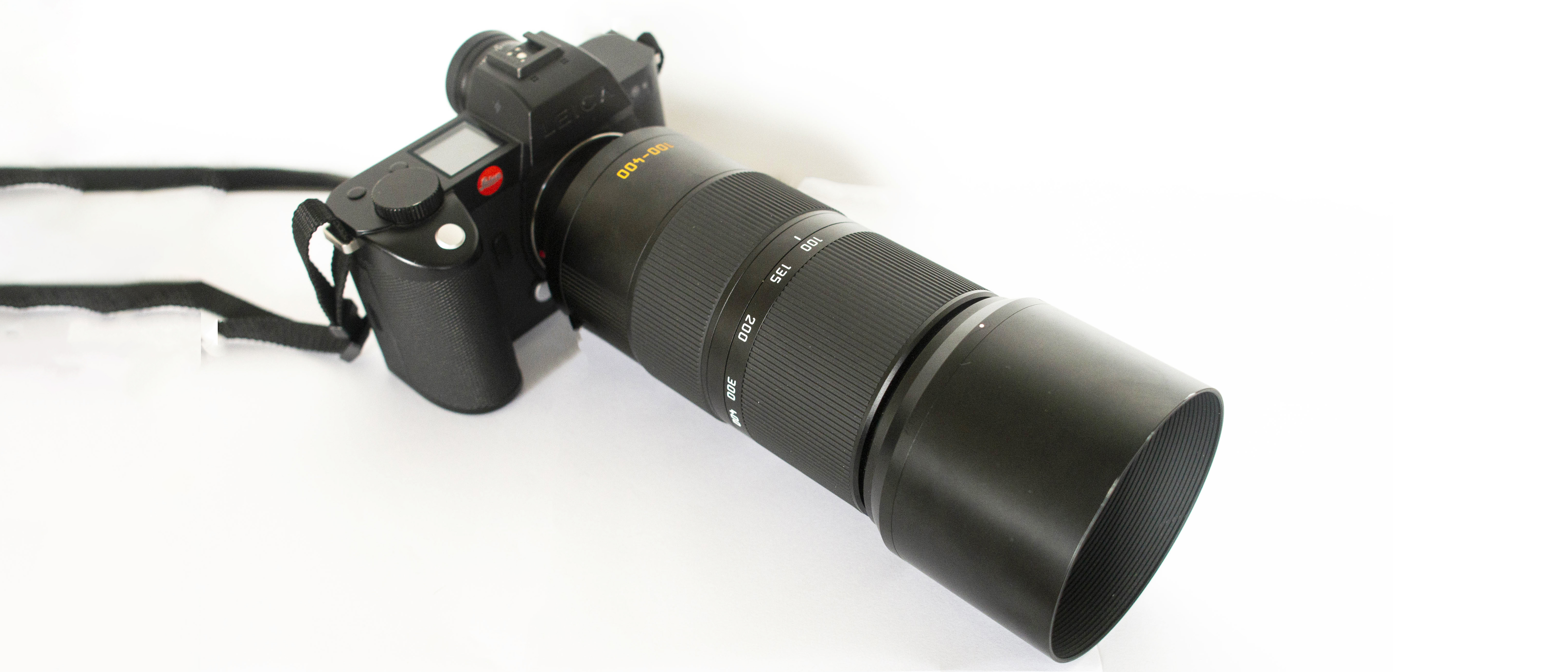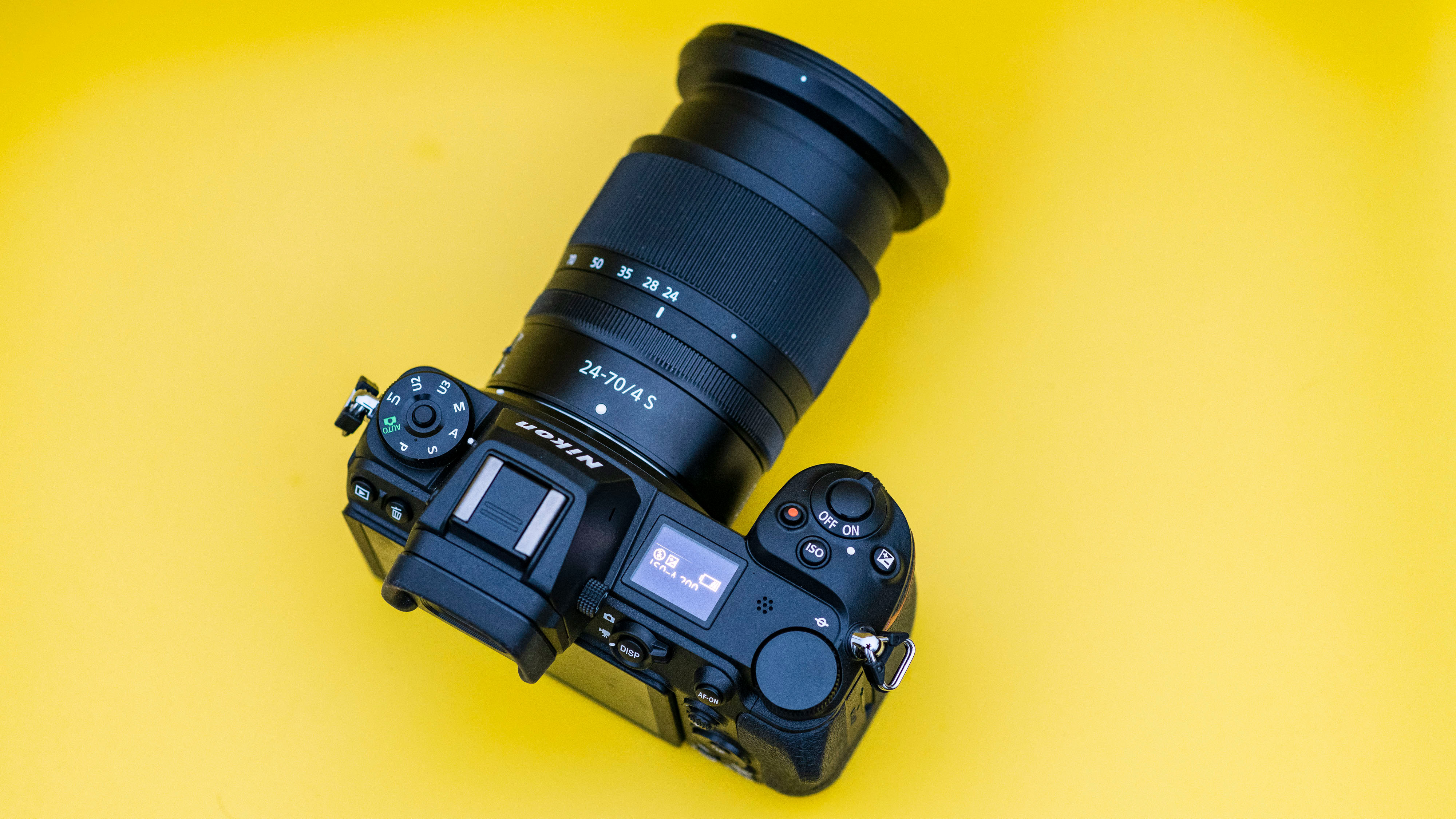Digital Camera World Verdict
Super telephoto zooms are all the range due to being relatively lightweight and extremely versatile, and the Leica 100-400mm Vario-Elmar-SL f/5-6.3 is no exception with this lens you get an extreme amount of coverage in a well-balanced package that's perfect for wildlife, birding or sports. While its maximum aperture is f/5 at 100mm and goes down to f/6.3 aperture at 400mm this lens is able to produce some beautiful images shot wide-open, and stopped down to f/8 - I would say between f5.6 and f/8 is the sweet spot for great images and while it is a bit fiddly to zoom, once you get the hang of it the lens performs extremely well.
Pros
- +
Compact at 100mm
- +
Perfect balance
- +
Built-in optical image stabilizer
Cons
- -
External zoom design
Why you can trust Digital Camera World
While I have to say my use of super telephoto lenses really is more akin to prime lenses of the 400mm, 600mm, and 800mm varieties, having a super-telephoto zoom really is a fun lens to have in your camera's bag!
Mount: Leica L-mount
Lens design: 22 Elements in 16 Groups
Maximum aperture: f/5
Minimum aperture: f/22
Angle of view: 23.8° to 6.4°
Minimum focusing distance: 3.6' / 1.1 m
Filter size: 82mm
Dimensions: 0.3 x 0.6' / 88 x 198 mm
Weight: 3.37 lb / 1.53 kg
I found myself loving the fact I have such a vast zoom range as my disposable with a simple twist of the hand I could go from a nice establishing 100mm shot to a super close-up at 400mm within an instant - I can really see this lens appealing to the all the wildlife photographers and videographers out there that want a one lens setup that can do it all.
When you think of vast zoom lenses like the Leica 100-400mm Vario-Elmar-SL f/5-6.3 you would think they would weigh a lot, but in comparison to their prime lens equivalents, super-telephoto zooms are lightweights, in fact, Leica 100-400mm Vario-Elmar-SL f/5-6.3 only weighs in at 3.37 lb / 1.53kg.
While some of you might think that's a vast bit of weight to be carrying around a mountainside or holding on a beach shooting surfing, it's nowhere near the back-breaking 4.63 lb / 2.1kg of the more traditional 400mm f/4 lenses on the market.
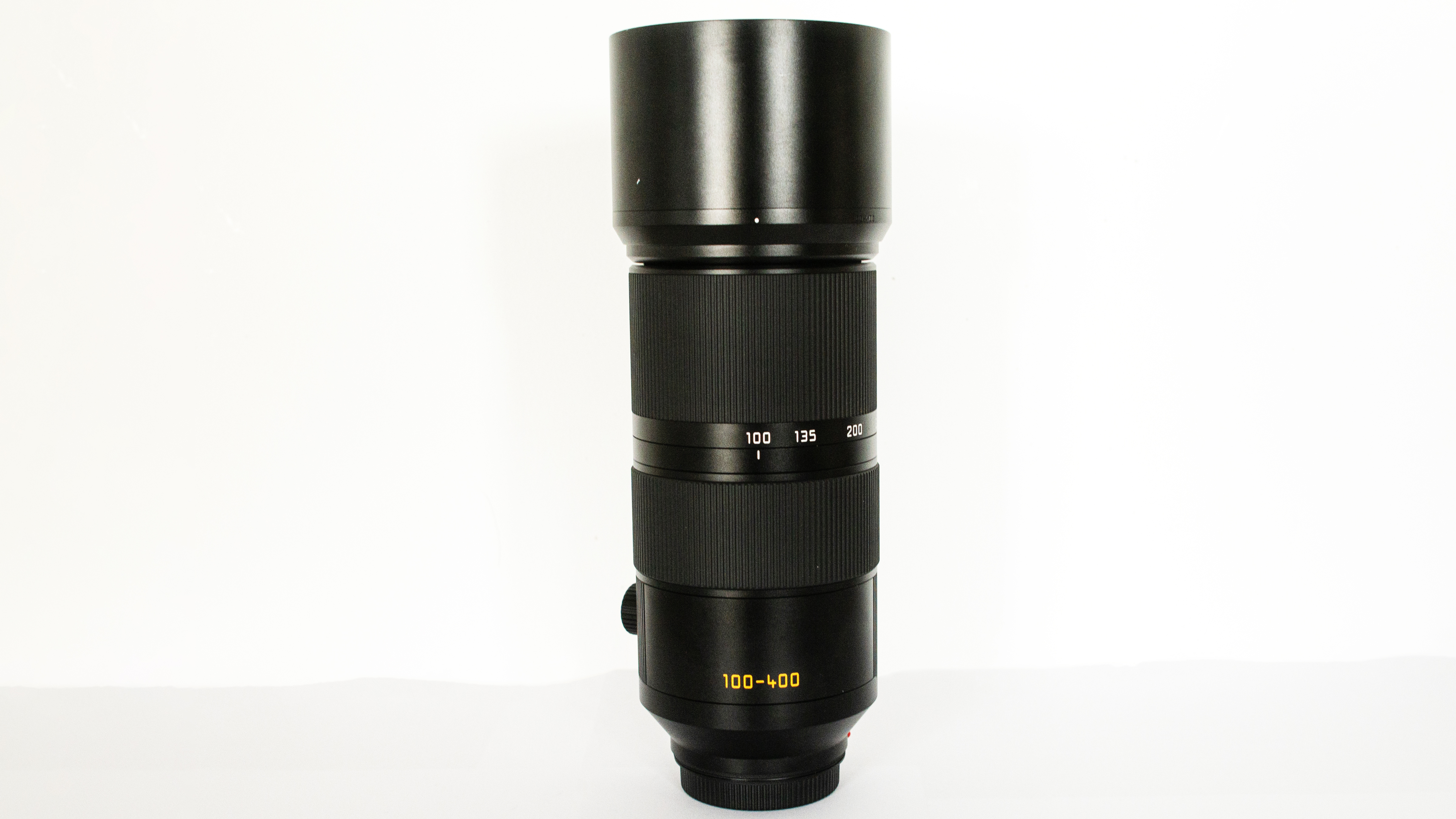
Leica 100-400mm Vario-Elmar-SL f/5-6.3 Build and Handling
This super-telephoto zoom is a stroke of genius from the German camera manufacturer, capturing probably the most used focal lengths in one lens, 100mm, 200mm, 300mm, and 400mm all having bold orange markings.
With every other focal length in between, this 100-400mm lens offers a vast zoom range giving photographers, and videographers alike a tremendous amount of options when framing their images to video, with the ability to capture establishing shots and being able to zoom in for more detailed observations, without moving a muscle.
As soon as you mount this lens to your Leica SL2 or Leica SL2-S camera you can feel how well this lens is constructed and it is perfectly balanced, even without a battery grip or using one of the best monopods.
Its focus ring is super smooth to operate making this lens a dream if you still love manual focusing however, I will say operating the zoom ring from 100mm to 400mm does take a bit of effort to turn while handheld, I would recommend zooming to your required focal length first then taking your shot - but if you are using a monopod or one of the best tripods this will certainly not be an issue -but it's worth noting if you love shooting handheld.
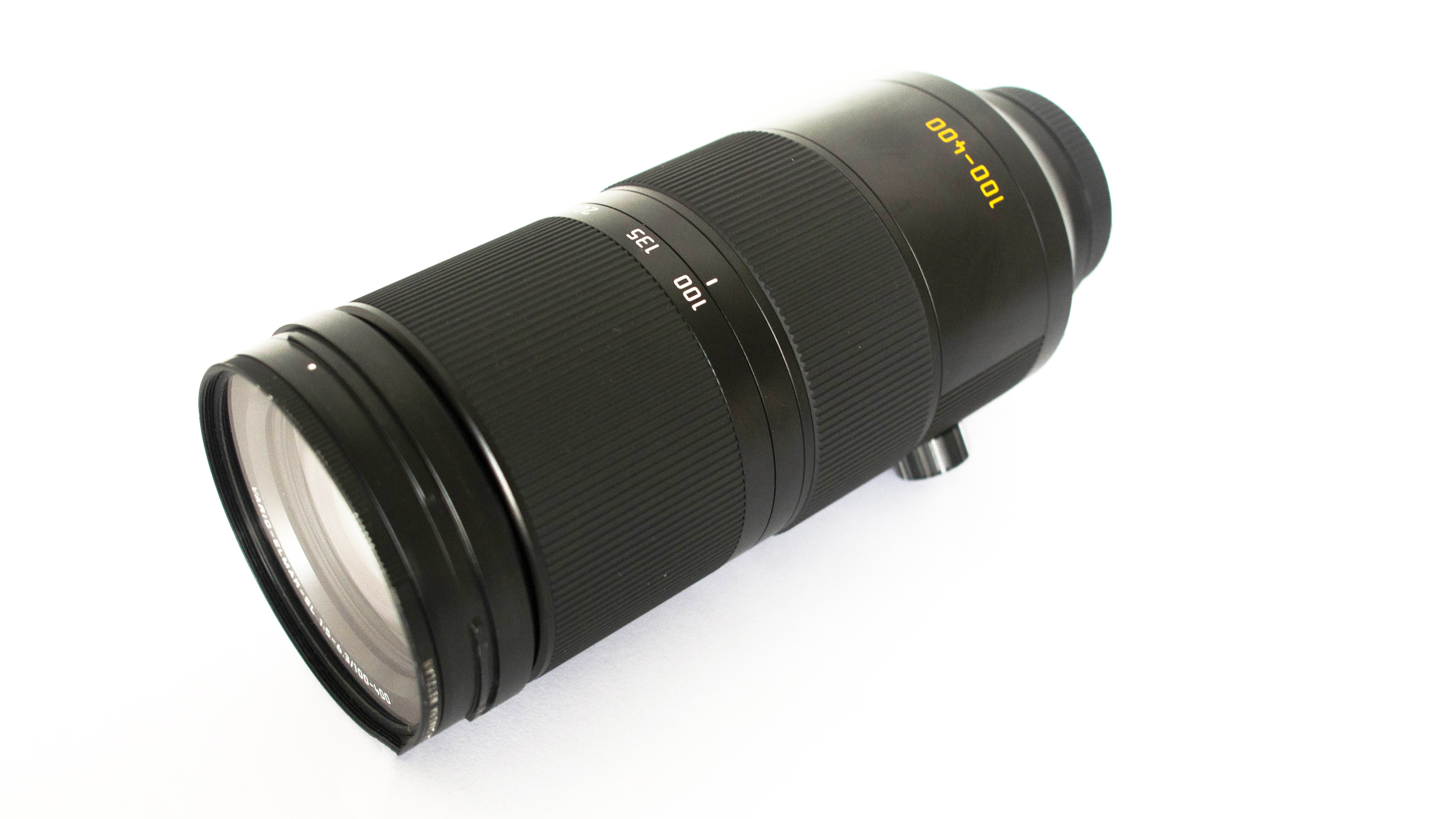
Leica 100-400mm Vario-Elmar-SL f/5-6.3 Performance
For every image I saw, this lens managed to take it, just how I envisioned it. If you rely on autofocus for all your images, in AF-C mode on the Leica SL2-S it was extremely fast to focus, while this is mostly down to the SL2-Ss tracking system - every image I took across this review was sharp and it never disappointed.
If manual focus is your bread and butter then I can only say this lens will be a dream to use, although there is no distance scale marking on the lens, so if you want to "zone focus" you will have to preset that before taking any images - but if you use manual focus all the time to get your images razor sharp then you will love using this lens.
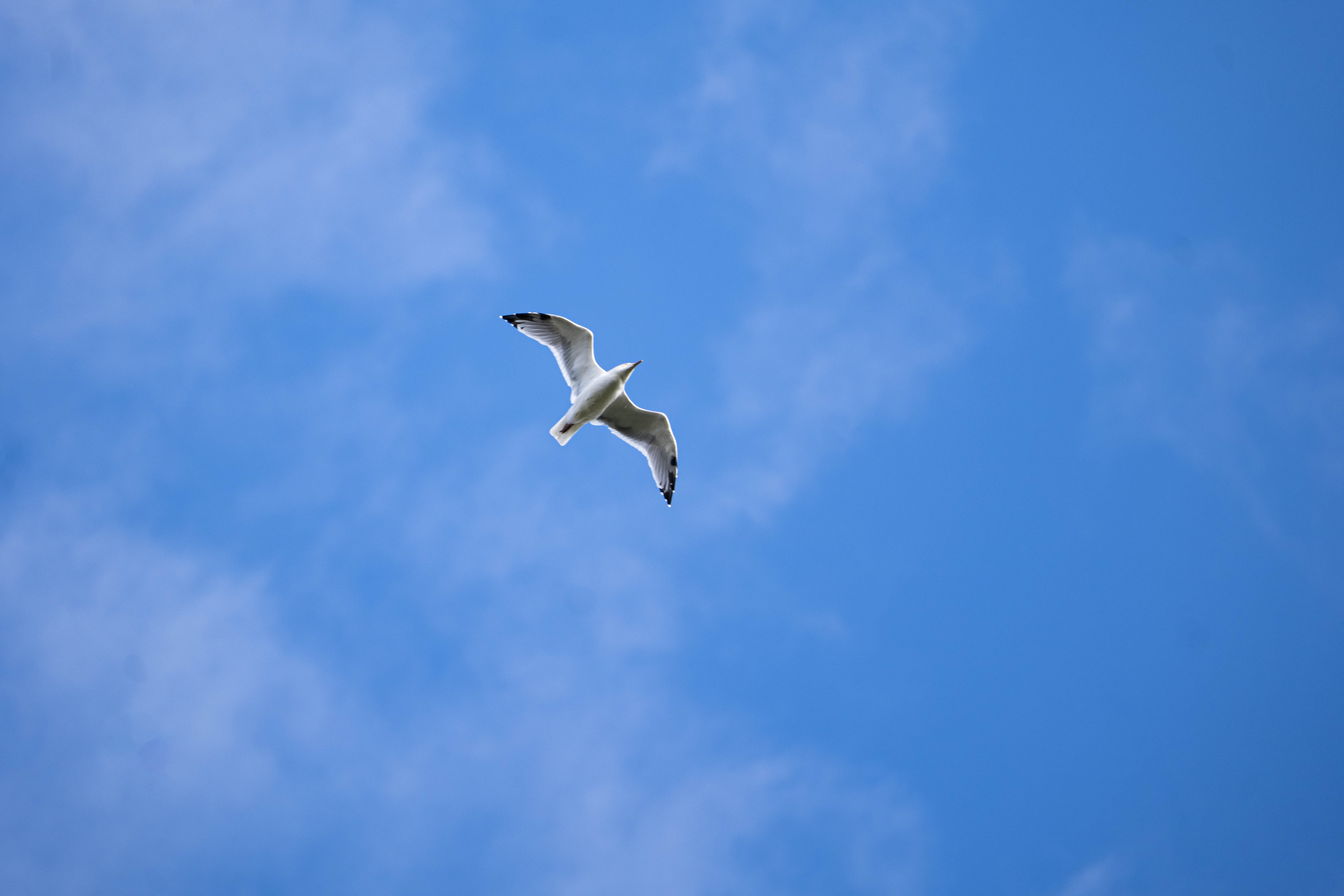

Obviously, this lens is able to shoot wide open at f/2 which lets in heaps of light and makes shooting in the most dimly-lit surroundings a total walk in the park - perfect for those who like to shoot images in all locations and at all times of the day, even at night.
Overall I'd say this lens produces amazing images with rich tonalites and high clarity I have ever seen in a mirrorless system, and I am sure anyone who buys one will not be disappointed.
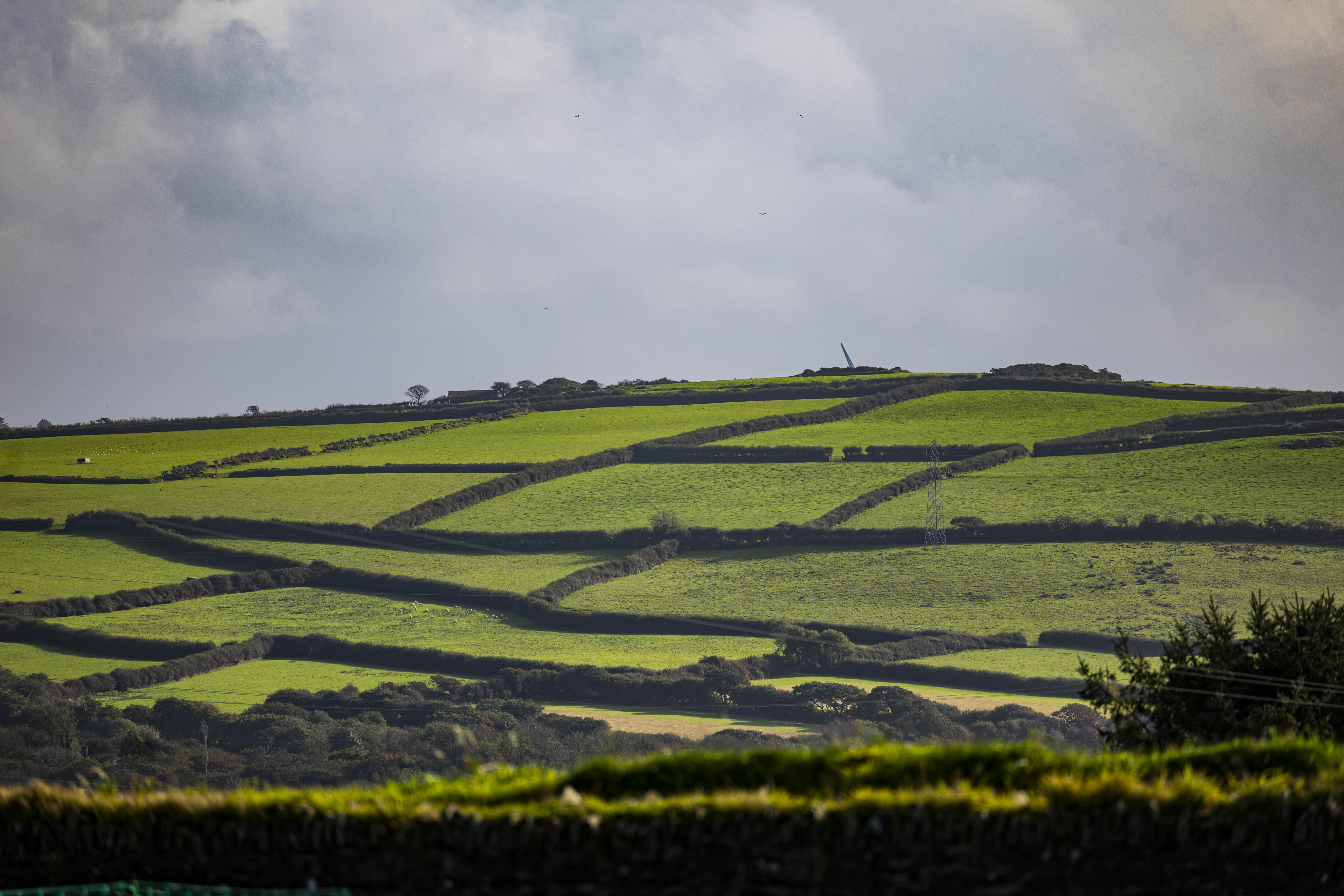
Leica 100-400mm Vario-Elmar-SL f/5-6.3 Lab Results
We run a range of lab tests under controlled conditions, using the Imatest Master testing suite. Photos of test charts are taken across the range of apertures and zooms (where available), then analyzed for sharpness, distortion and chromatic aberrations.
We use Imatest SFR (spatial frequency response) charts and analysis software to plot lens resolution at the center of the image frame, corners and mid-point distances, across the range of aperture settings and, with zoom lenses, at four different focal lengths. The tests also measure distortion and color fringing (chromatic aberration).
Sharpness:
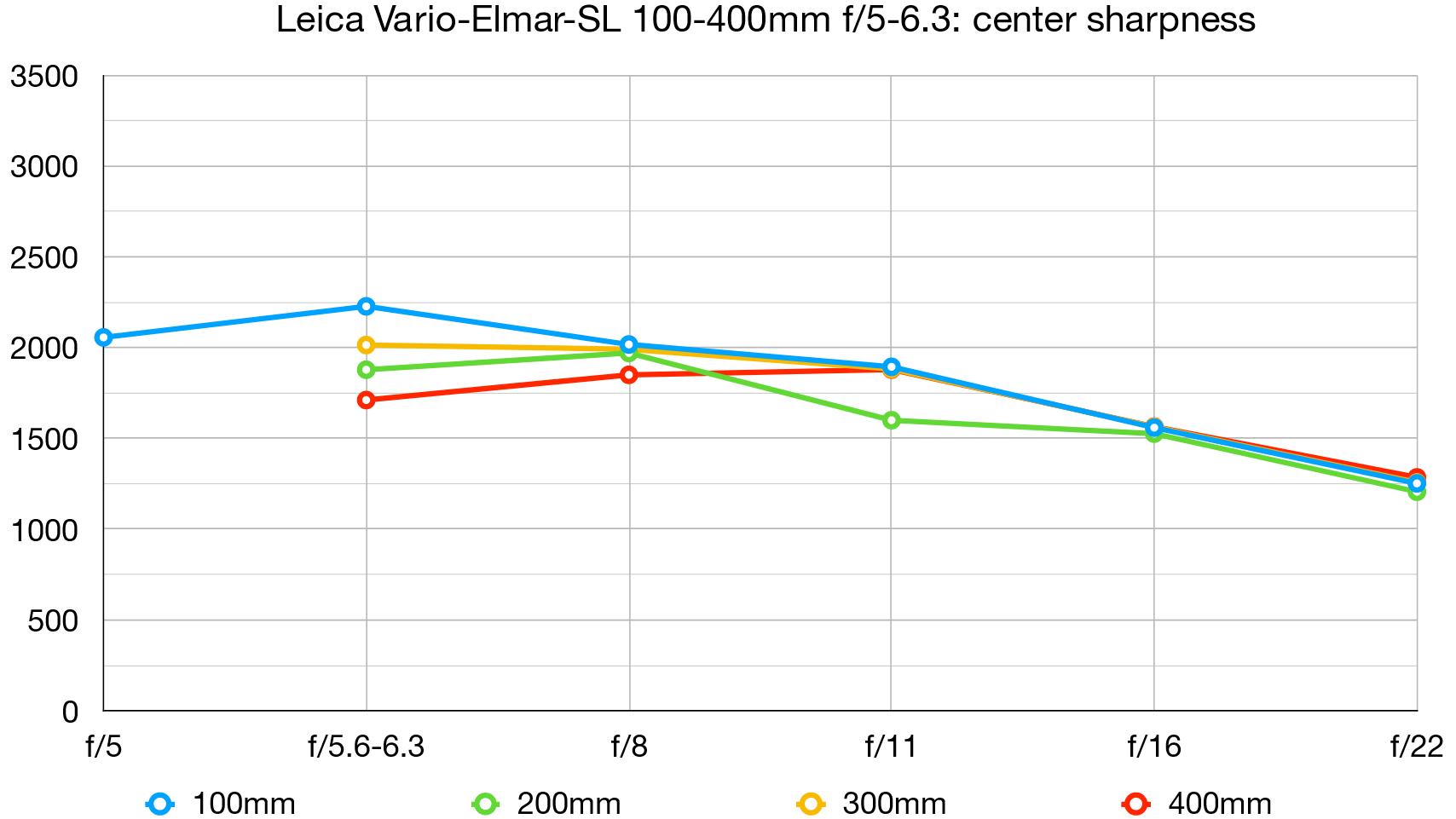
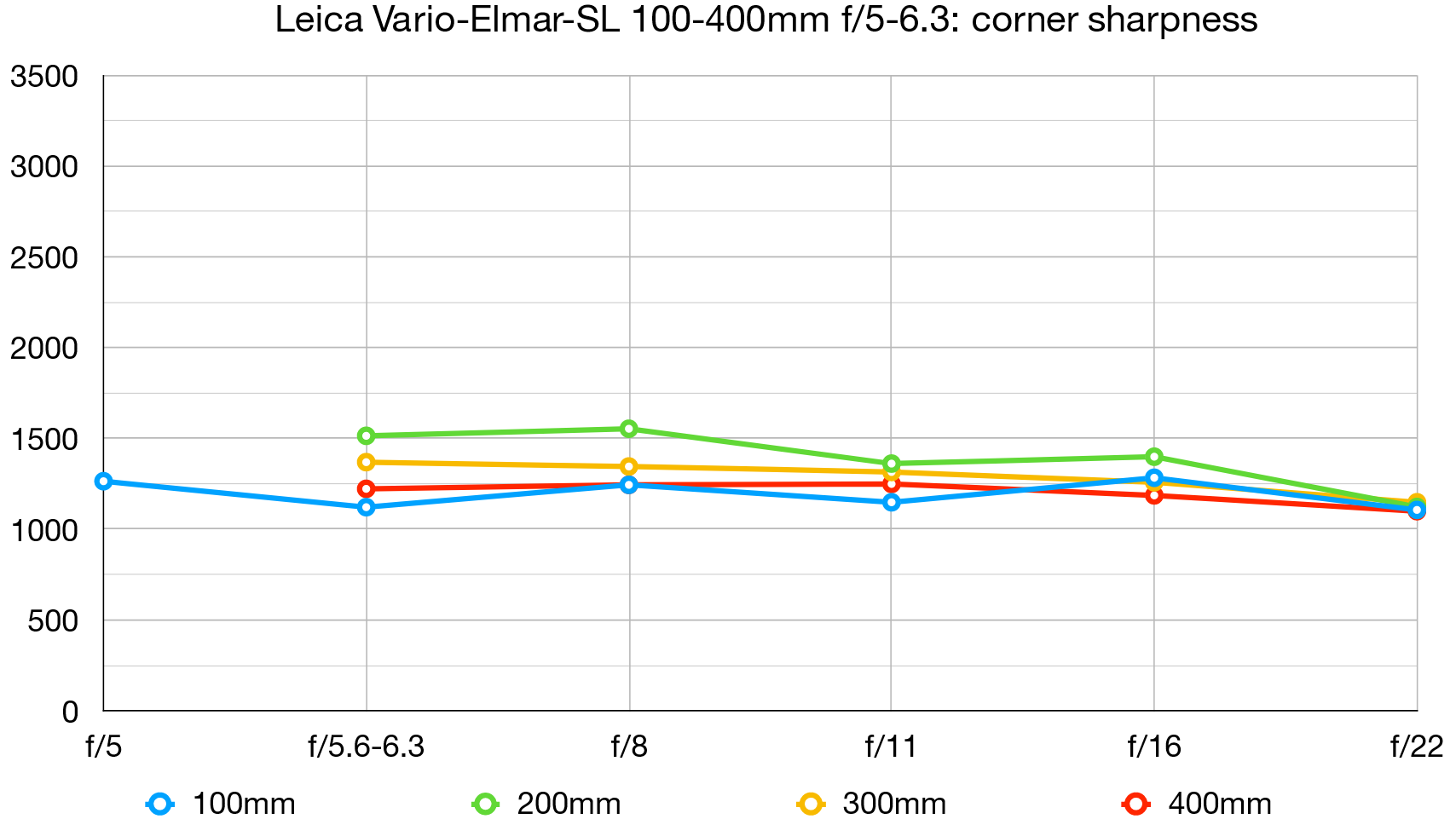
Center sharpness is very good throughout the aperture range. Corner sharpness is more average, however, especially at either end of the focal range.
Fringing:
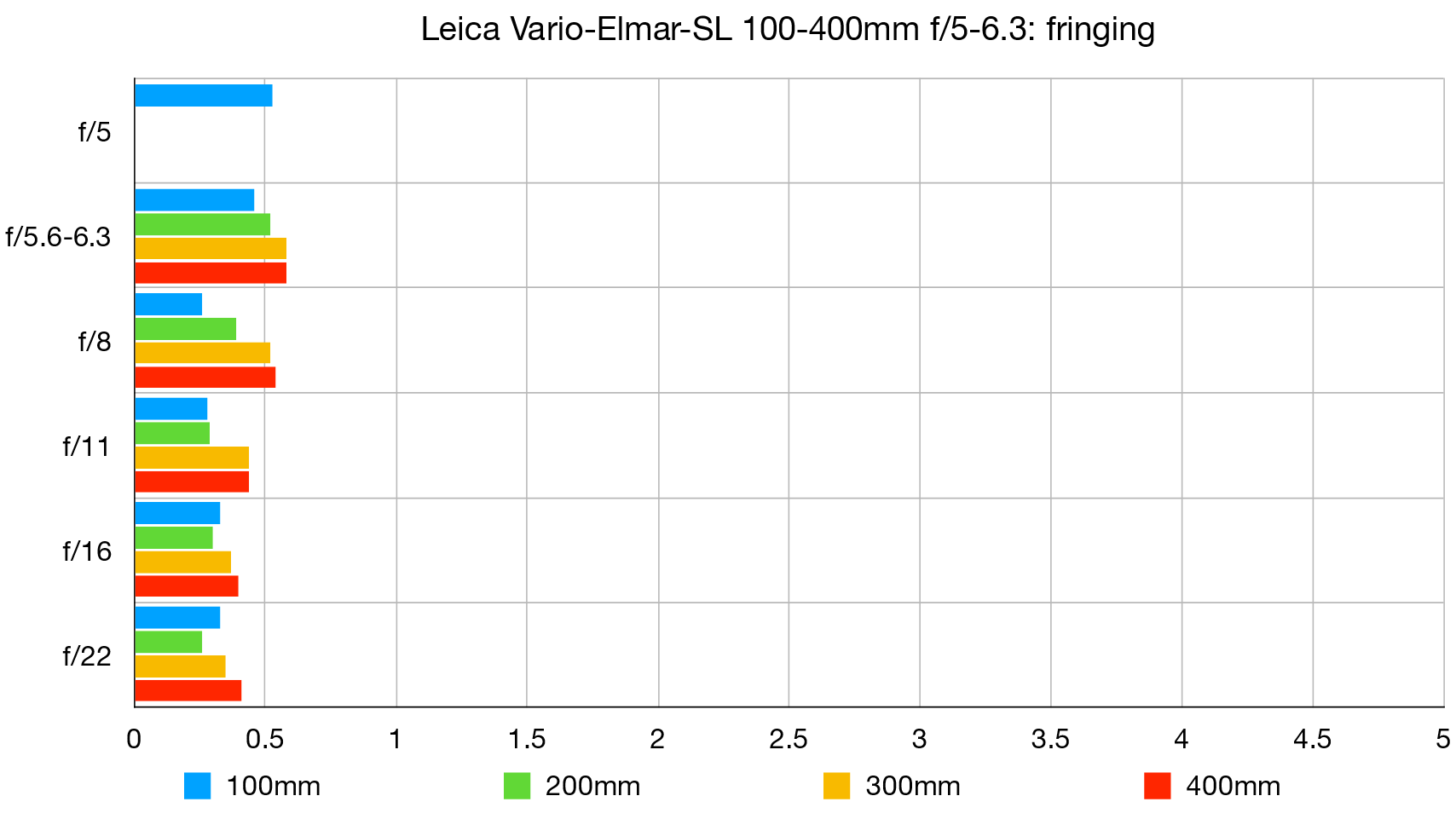
Color fringing is minimal at all focal lengths, even at the extreme edges and corners of the image frame.
Distortion:
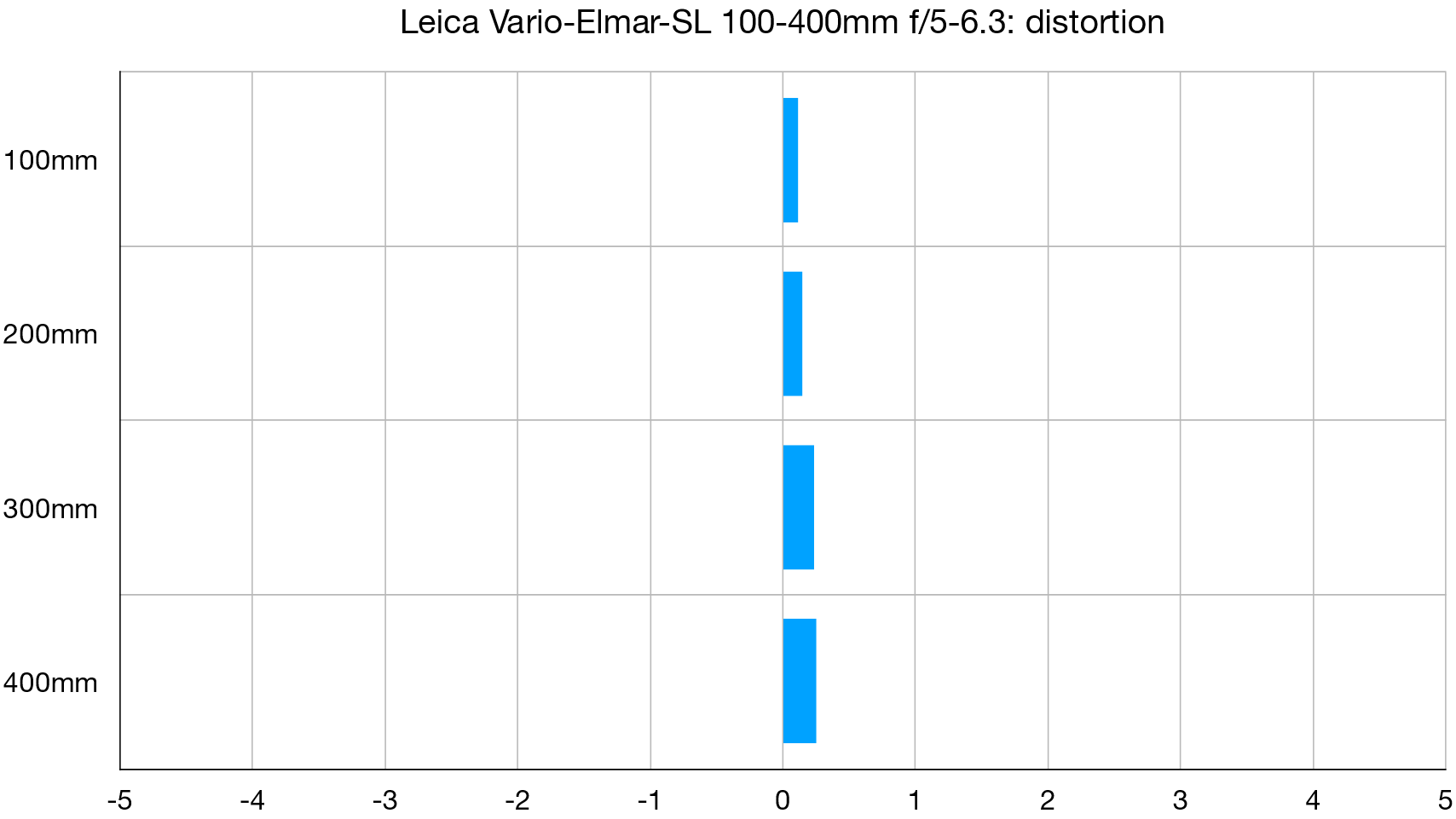
Distortion is negligible at all focal lengths.
Leica 100-400mm Vario-Elmar-SL f/5-6.3 Final Verdict
Super telephoto zooms are all the range due to being relatively lightweight and extremely versatile, and the Leica 100-400mm Vario-Elmar-SL f/5-6.3 is no exception with this lens you get an extreme amount of coverage in a well-balanced package that's perfect for wildlife, birding or sports.
While its maximum aperture is f/5 at 100mm and goes down to f/6.3 aperture at 400mm this lens can produce some beautiful images shot wide-open, and stopped down to f/8 - I would say between f5.6 and f/8 is the sweet spot for great images and while it is a bit fiddly to zoom, once you get the hang of it the lens performs extremely well.

If you enjoyed this, you might also like our best Best Leica SL lenses guide, or our reviews on the Leica SL2 or Leica SL2-S, and while you are here why not see the best Leica cameras.

For nearly two decades Sebastian's work has been published internationally. Originally specializing in Equestrianism, his visuals have been used by the leading names in the equestrian industry such as The Fédération Equestre Internationale (FEI), The Jockey Club, Horse & Hound, and many more for various advertising campaigns, books, and pre/post-event highlights.
He is a Fellow of the Royal Society of Arts, holds a Foundation Degree in Equitation Science, and holds a Master of Arts in Publishing. He is a member of Nikon NPS and has been a Nikon user since his film days using a Nikon F5. He saw the digital transition with Nikon's D series cameras and is still, to this day, the youngest member to be elected into BEWA, the British Equestrian Writers' Association.
He is familiar with and shows great interest in 35mm, medium, and large-format photography, using products by Leica, Phase One, Hasselblad, Alpa, and Sinar. Sebastian has also used many cinema cameras from Sony, RED, ARRI, and everything in between. He now spends his spare time using his trusted Leica M-E or Leica M2, shooting Street/Documentary photography as he sees it, usually in Black and White.

